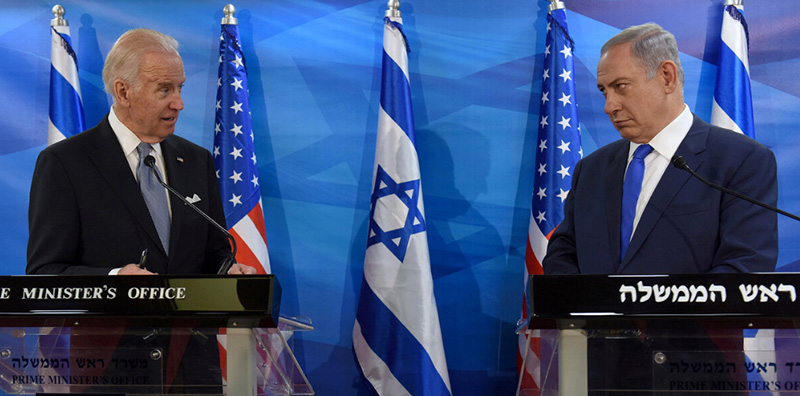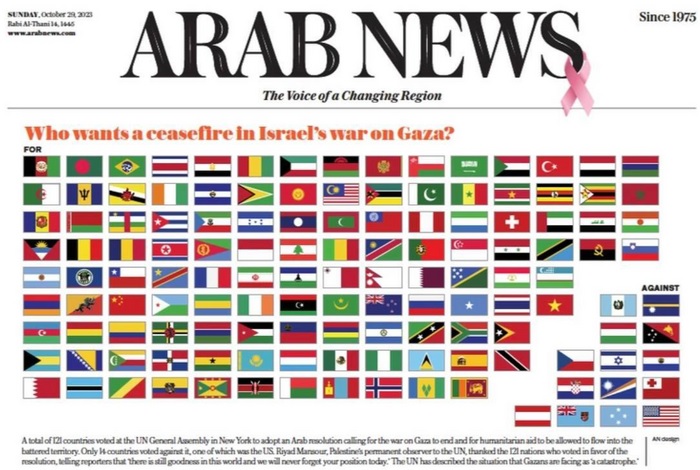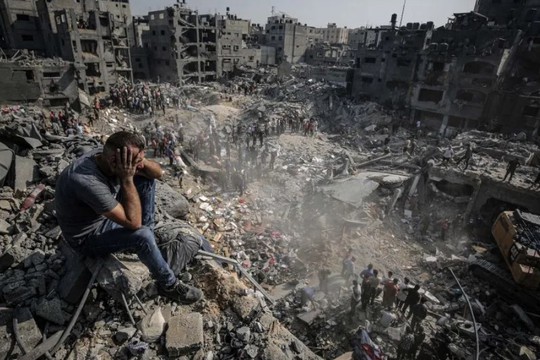Israel launches second airstrike in two days on Gaza refugee camp Jabalya.
Photo: Al Jazeera
This is the Gaza Manifesto, proclaimed by Ramzy Baroud, a journalist and the Editor of The Palestine Chronicle:
One, no peace, stability, security, or prosperity in the Middle East is possible without justice for Palestine and freedom for the Palestinian people.
Two, though the Arabs have largely failed Palestine, and continue to do so, Muslim nations are finding a common ground around their support for the Palestinian people. If this momentum continues – and it should – it will be a game changer.
Three, Israel is militarily weak and, despite all assurances by Tel Aviv throughout the years, it is nothing but a vassal, a client regime for Washington. Its survival is linked to Washington’s support in every possible way.
Four, the US no longer holds all the cards. With the unity of Resistance throughout the Middle East, the growing clout of Iran, the refusal of Arab countries to play the role of lackeys for Washington and the strong position from China, Russia, Iran, Turkey and others, the region is no longer an American playbook.
Five, armed resistance is not a fantasy, as many have believed and repeated throughout the years. True, while Gaza, on its own, will not be able to defeat Israel, the combined power of the Resistance is demonstrating that Israel is no longer the all-powerful country that, single handedly – with American support, of course – defeated several Arab armies in 1967.
Six, and perhaps, the most important of all these realizations, is that Gaza has ended the sectarian war in the Middle East, a decades-long conflict that has been stirred by numerous parties, including the US, Israel, Middle Eastern governments and many terrorist groups.
When the US launched its war on Afghanistan in 2001 and, again, on Iraq in 2003, it hardly expected that the Middle East, merely two decades later, would reinvent itself beyond American definitions and expectations.
And to think that tiny little Gaza is the spark that has refocused the energies of the whole region is a political miracle, that many political scientists will find difficult to understand, let alone explain.
 President Biden and Israel Prime Minister Netanyahu.
President Biden and Israel Prime Minister Netanyahu.
Biden’s Israel gambit also lends itself to the prospect for further mistakes. To take the position that Israel is essentially above reproach, certainly publicly, is to flirt with a power potentially engaged in acts of genocide. The line between rogue state and ennobled avenger becomes blurry, notes Indian Countercurrents.
While international law is exacting about the bar on what constitutes genocide (there can be no other inference, essentially, of an intent to destroy, in whole or in part, a national, ethnical, racial or religious group), statements made by Israeli officials, the chilling dehumanising rhetoric towards Palestinians, the collective punishment of the siege, and the evacuation orders of over a million Gaza residents do not auger well for the historical record.
That record is already bulking, aided by suggestions that the Gaza Strip we emptied. Calcalist, an Israeli business daily, was first to report on a plan from Israeli Intelligence Minister Gila Gamliel to forcibly transfer Gazans into the Sinai Peninsula. Doing so would “yield positive and long-term strategic results”. While the paper cautions readers about the influence Gamliel exerts in the government, the idea of relocating and ensuring a “final settlement of the entire Gaza population,” is something the Misgav institute for National Security & Zionist Strategy finds entirely palatable.
In an emergency briefing paper published this month, expert lawyers of the US-based Center for Constitutional Rights asserted that there was a “plausible and credible case, based on factual evidence, that Israel is attempting to commit, if not actively committing, the crime of genocide in the occupied Palestinian territory, and specifically against the Palestinian people in the Gaza Strip.”
These policies have all been subsumed under the elastic netting of “self-defence”, a term that solidly binds Israel and the United States to an expansive use of retaliatory force. It has assumed the standing of holy writ in US foreign policy, shielding Israel from its more exuberant uses of violence. On October 18, for instance, the US rejected a Brazil-sponsored resolution calling for a “humanitarian pause” as it, in the words of US Ambassador to the UN Linda Thomas-Greenfield, “made no mention of Israel’s right of self-defence.” Every nation of the world had “the inherent right to self-defence, as reflected in Article 51 of the UN Charter.” If so inherent, why expressly mention it?

“Why are so many of the victims in Gaza children?” – asks “The Economist”.
Children are a very high proportion of the victims of war in Gaza. According to the Palestinian health ministry, 2,900 children were killed in the enclave between October 7th and 24th. This accounts for about 40% of the total death toll of more than 7,000. Although there are some concerns that number could be inflated — the health ministry is run by Hamas and President Joe Biden said that he has “no notion that Palestinians are telling the truth about how many people are killed” — the ministry’s estimates have been broadly accurate in previous conflicts.
In Ukraine, a conflict between two much bigger powers, children account for fewer than 550 of roughly 9,800 civilian fatalities over a much longer period. Gaza’s enormous child death toll reflects, among other things, its especially youthful demography. About half of the population of the Palestinian territories is younger than 20 years old, a much higher share than the average of other upper-middle income countries such as Iraq, Namibia and Thailand.
The basis of a youthful society is a high fertility rate, the number of children a typical woman will have in her lifetime. The rate in the Palestinian territories, including both Gaza (total population 2m) and the West Bank (3m), was 3.4 in 2021, according to the un Population Division. From 2017 to 2019 the Palestinian Central Bureau of Statistics (PCBS) put it at 3.8. Detailed data that disaggregate Gaza and the West Bank are hard to come by. But, according to the pcbs, Gaza’s fertility was 3.9 during that period. These rates are far higher than those of neighbouring Israel, Jordan or Egypt and comparable to those of Ghana or Congo, both much poorer countries.
A fertility rate this high is typically associated with short lifespans, poverty and low levels of female education. The Palestinian territories do not have those characteristics. Average income per person in the territories is $4,600 a year, higher than in Egypt and Jordan. (The figure for Gaza is thought to be considerably lower.) More girls than boys are enrolled in secondary education. The Palestinian territories are unusual in combining poor-country fertility with upper-middle-income social characteristics.
Why? It seems likely that the long conflict with Israel and the influence of Hamas (which runs Gaza but not the West Bank) are partly responsible. Yasser Arafat, the former president of the Palestinian Authority, once said his people were conducting “a war of cradles”: population growth was a way to affirm Palestinian identity and perseverance. Hamas’s pro-natal rhetoric has been particularly vociferous. After taking control of Gaza in 2007 it sought to maintain the strip’s high fertility rate; which stood at 5.8 from 1999 to 2003, one of the highest anywhere.
Fertility has fallen since, as it has almost everywhere. But Gazans born in the baby boom of 20 years are now having their own families. In 2015 Gaza had about two thirds the population of the West Bank, the historic centre of Palestine. At current rates, it will be near parity within 25 years, giving Gaza a bigger voice in the debate over any future Palestinian state.

read more in our Telegram-channel https://t.me/The_International_Affairs

 10:37 04.11.2023 •
10:37 04.11.2023 •























